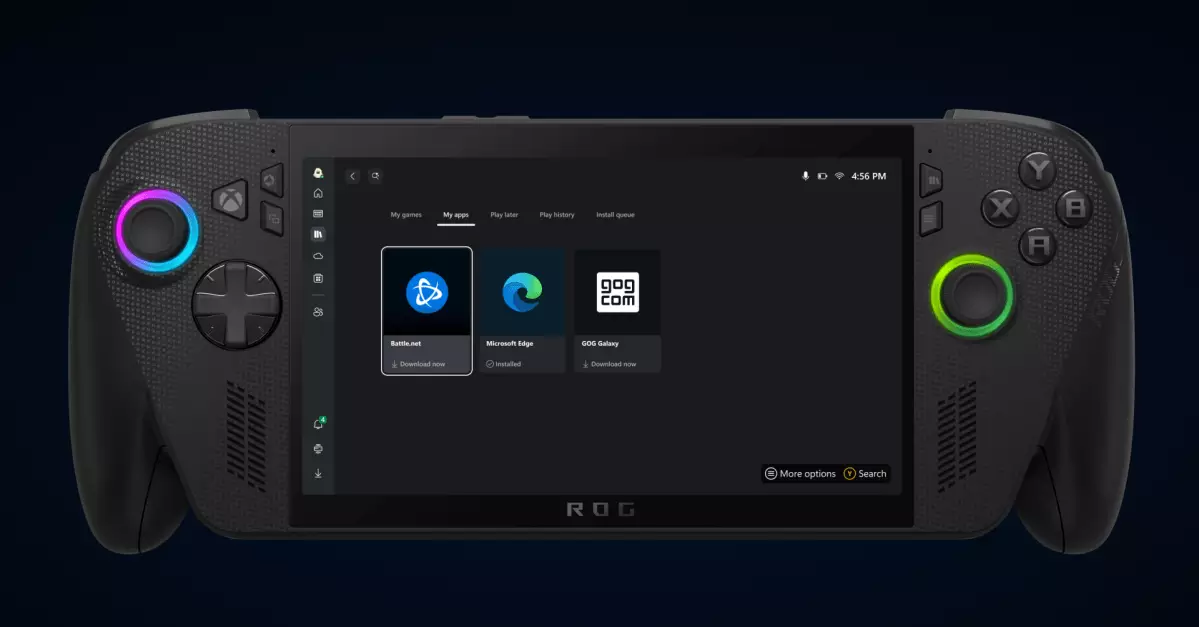In the rapidly evolving landscape of PC gaming, Microsoft is boldly reimagining how players access and manage their favorite applications. The introduction of the new “My apps” feature within the Xbox app for Windows 11 signals a deliberate move away from a fragmented user experience toward a more streamlined, inclusive platform. This isn’t just a minor update—it represents Microsoft’s desire to position the Xbox ecosystem as the central hub for PC gamers, regardless of where their games or utilities originate.
Previously, gaming enthusiasts had to navigate multiple storefronts—Steam, Battle.net, Ubisoft Connect, GOG Galaxy—and juggle launching applications from diverse sources. This fragmentation hampers efficiency and diminishes the seamless experience that modern gamers demand. Microsoft’s initiative to incorporate third-party apps and storefronts directly into the Xbox app aims to flatly challenge this disjointed paradigm. By creating a consolidated “My apps” library, the company is asserting that PC gaming is no longer about managing multiple windows and tabs but about centralizing access in an intuitive, cohesive environment.
This strategic decision goes beyond mere convenience; it is a direct challenge to traditional PC gaming ecosystems and storefront dominance. Microsoft’s vision is clear: to transform the Xbox app into a comprehensive hub that not only manages Xbox and Windows Store titles but also simplifies access to other major gaming platforms. The impact of this approach could ripple across the industry, potentially disrupting how third-party storefronts operate in relation to integrated platforms like the upcoming Xbox ecosystem.
Empowering Handheld Gaming Devices and Beyond
Microsoft’s focus on handheld PCs, such as the ROG Xbox Ally, extends the significance of this feature even further. With the rise of portable gaming devices bridging the comfort of consoles and the power of PCs, user experience becomes paramount. “My apps” is designed to streamline navigation on these devices, minimizing reliance on the traditional Windows desktop interface, which can complicate usability on smaller screens.
The implications here are profound. By integrating third-party apps into a unified interface, Microsoft aims to elevate handheld gaming beyond mere portability, transforming it into a truly integrated experience. It reduces tedious multitasking—no more hunting through multiple menus or desktop interfaces—creating a gaming ecosystem that responds dynamically to the needs of on-the-go players. This move is not just about convenience; it is about fostering genuine fluidity and immersion in portable gaming, which is poised to become a core segment of Microsoft’s gaming strategy.
However, the current beta implementation reveals some rough edges. For instance, attempting to download and install apps like GOG Galaxy within the Xbox UI resulted in failure, underscoring the developmental stage of this feature. Yet, flaws are inevitable in beta testing—what matters is the trajectory. If Microsoft sustains its momentum, these issues will be ironed out, paving the way for a robust, all-encompassing gaming platform.
Reevaluating the Power Dynamics of Game Distribution
Microsoft’s push to centralize third-party services within its Xbox app hints at a broader industry trend: the gradual erosion of traditional storefront power structures. Historically, platforms like Steam or Epic Games Store thrived on exclusivity and user loyalty, often discouraging cross-platform integration. Through “My apps,” Microsoft signposts a future where the boundaries between these ecosystems blur, and user choice—rather than platform favoritism—takes precedence.
This approach could democratize access, making it easier for gamers to experiment with different platforms without feeling locked into a single storefront. Yet, it also raises questions about market dominance. Will Microsoft’s consolidating efforts lead to a de facto super-platform, overshadowing competitors? Or will this push for integration foster healthy competition, pushing storefronts to innovate and improve their services?
Additionally, by integrating rivals’ storefronts and utilities within its ecosystem, Microsoft is potentially redefining how digital rights and monetary flows are managed. The success of “My apps” hinges on acceptance from third-party developers and storefront operators who may perceive this as a dilution of their independence. Still, the long-term gains for users—simplicity, efficiency, and a unified experience—are undeniable.
The Future of PC Gaming Is Integration, Not Isolation
Microsoft’s ambition to convert the Xbox app into the nerve center of PC gaming is both bold and remarkably strategic. This move signals a future where PC gaming isn’t siloed into isolated platform experiences but is part of a larger, interconnected ecosystem. While critics may argue that integrating third-party apps could compromise security or stability, the potential benefits—better user experience, seamless access, and enhanced portability—far outweigh these concerns if executed correctly.
What’s most compelling is Microsoft’s recognition that gaming is increasingly about convenience and personalization. The “My apps” feature is not just a tool—it’s a statement that the way we interact with games and utilities needs to evolve. It reflects a clear understanding that modern gamers value efficiency and flexibility, especially on portable devices where every second counts.
In the larger picture, this initiative aligns with Microsoft’s broader strategy to blend the boundaries between desktop, console, and portable gaming. As technology advances, such integration will likely become standard, shaping a future in which the gaming experience is no longer confined to individual platforms but is an accessible, interconnected universe.
By reimagining the Xbox app as a comprehensive portal, Microsoft isn’t just updating a feature—it’s setting a new standard for what PC gaming can be: unified, portable, and user-centric. It’s a bold step toward leveraging the full potential of the gaming ecosystem, and if successful, it could redefine industry norms for years to come.

